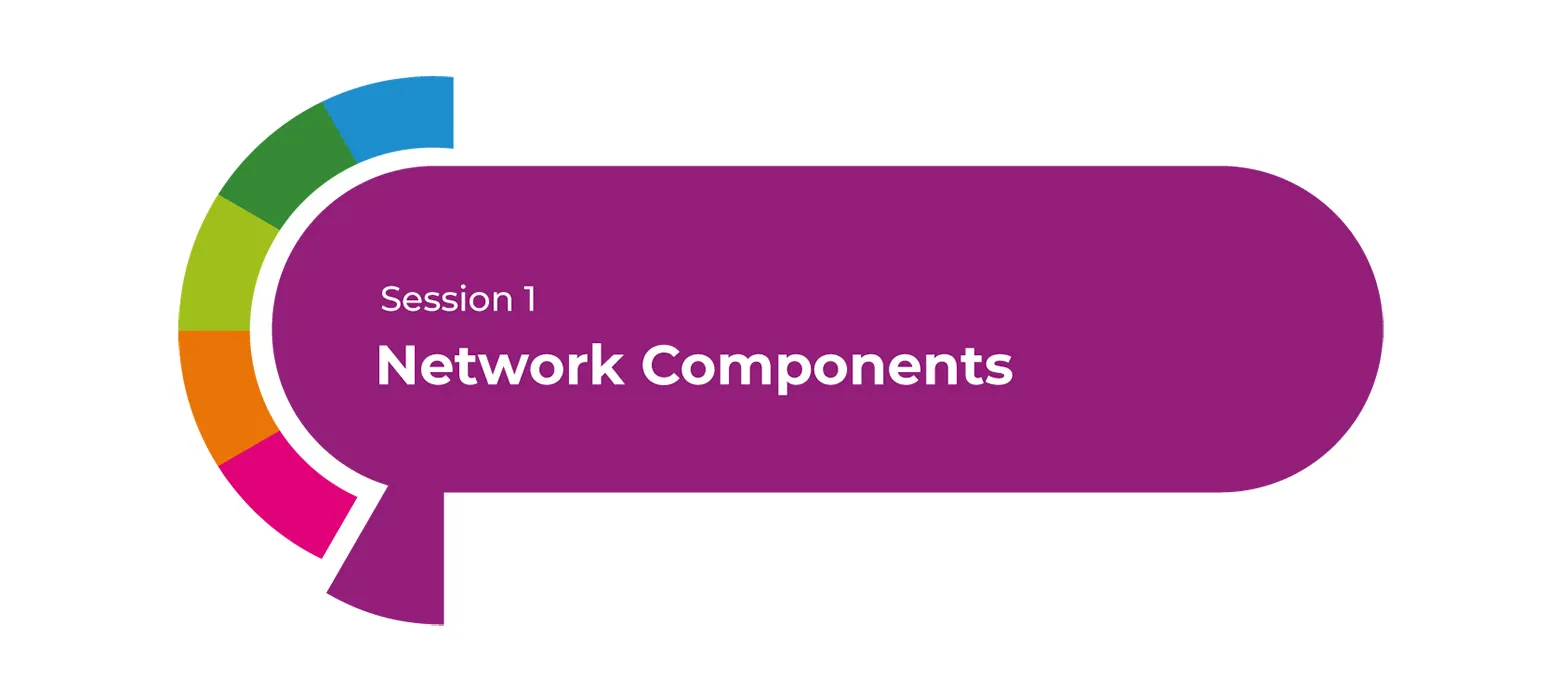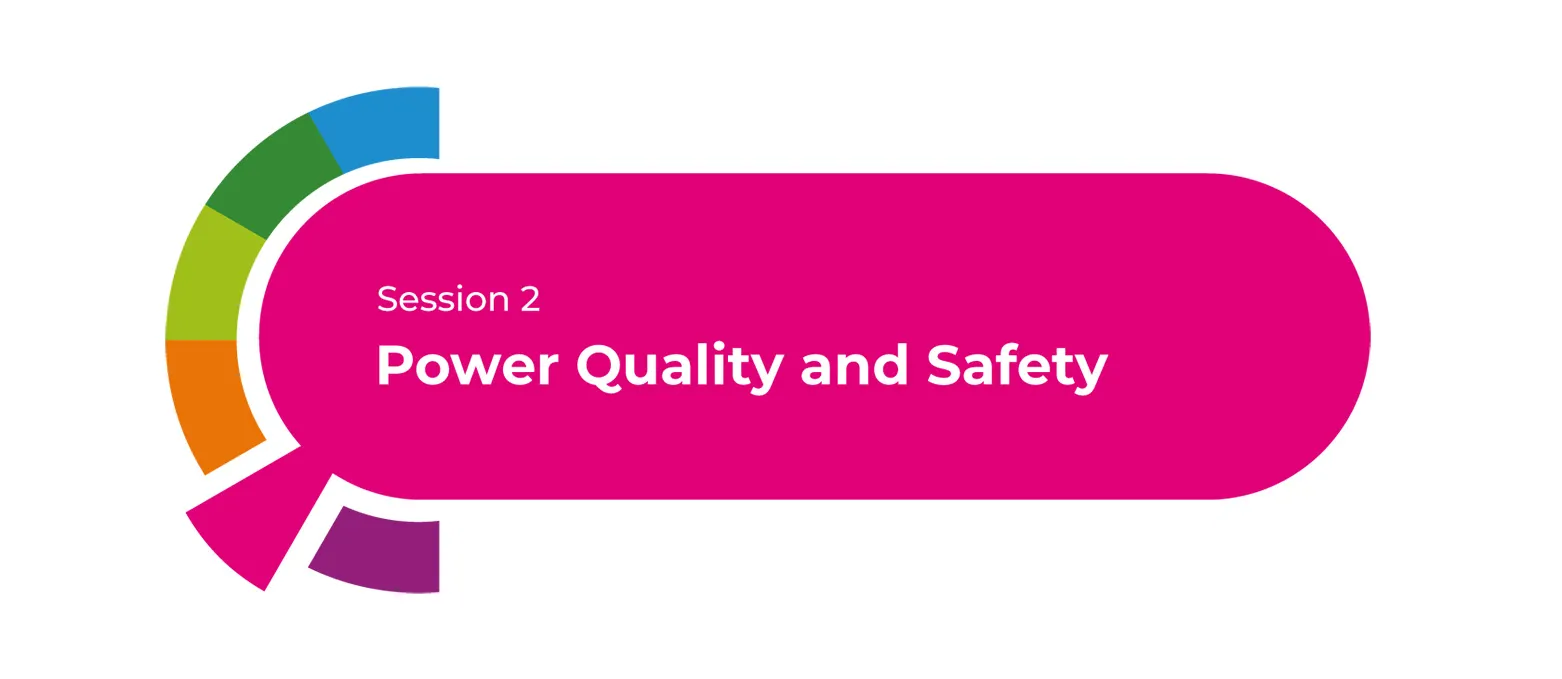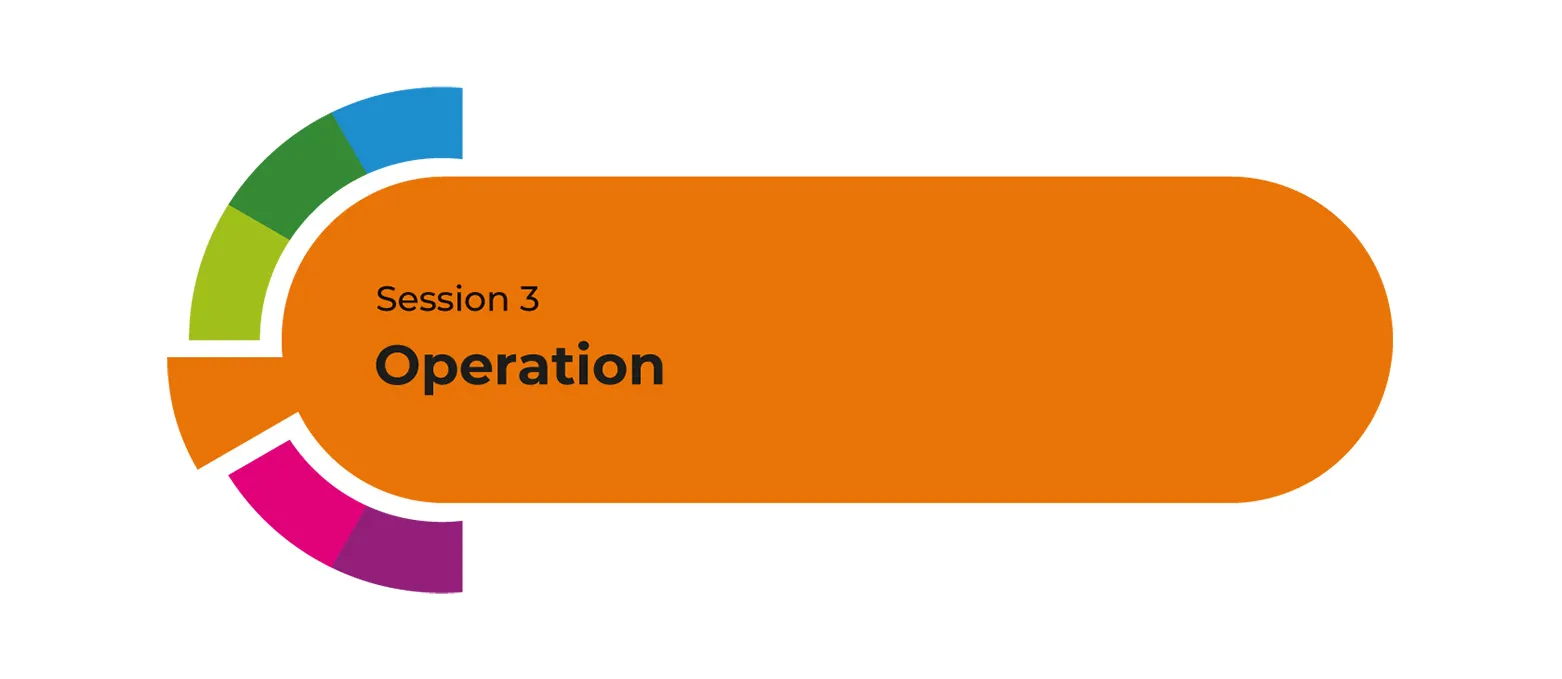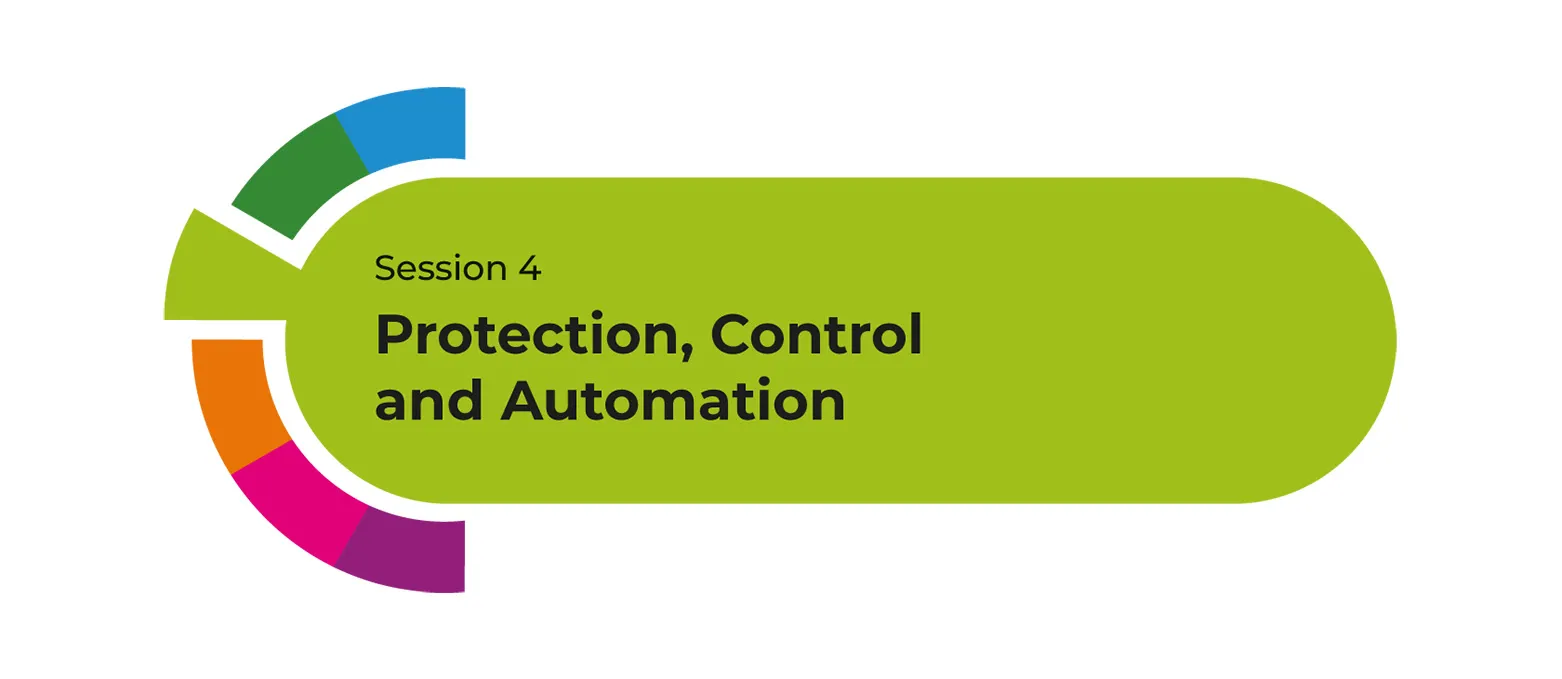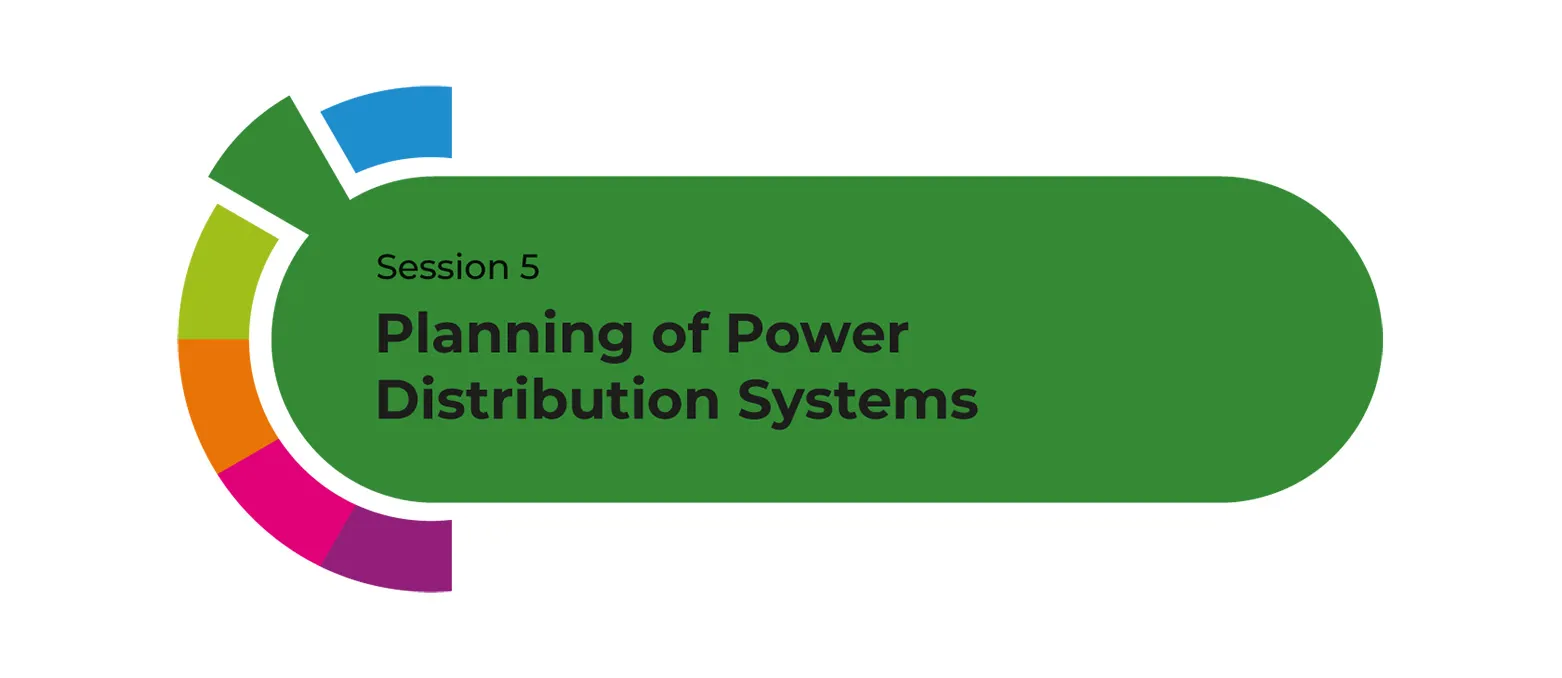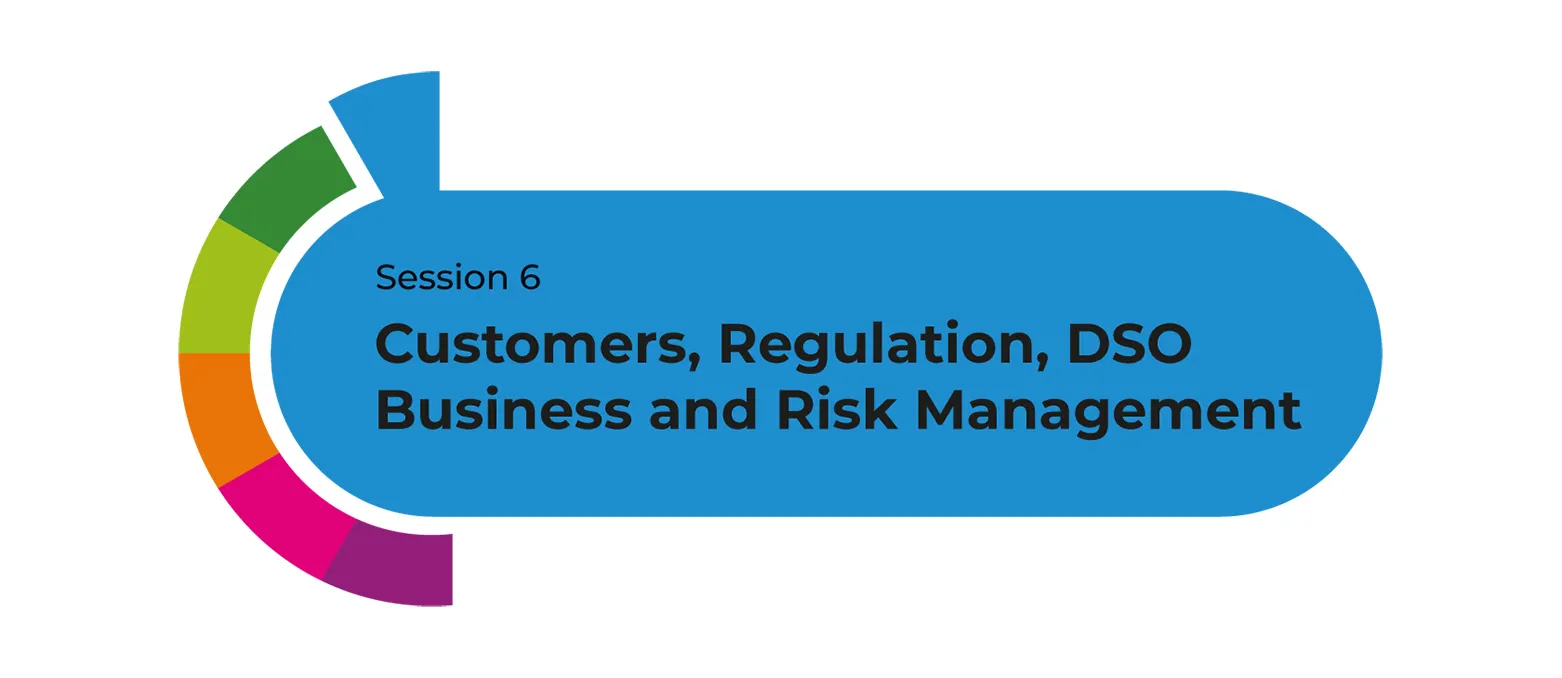Technical scope
Key themes of CIRED 2025.
Fast tracks from topical subjects to sessions
Network Components
| Asset management | Flexibility Management and DSO/TSO interface | Microgrids, citizens energy communities, local markets | Energy transition, sector coupling, Hydrogen and e-mobility | Resiliency, reliability, and the impact of climate change | Digital transformation, artificial intelligence and cybersecurity |
| New, recycled and bio-sourced materials Greener components eco-design, life cycle analysis Limitation of visual and noise impact Life extension, upgradeability StandardsSafety and ergonomics |
Components and sensors for voltage control and power flow management Power-electronics-based components for load and generation management Storage devices |
Components for microgrids Components for disconnection and reconnection with main grid |
Components for charging station and DER connection Components for large cities (high ampacity, superconductivity, fault current limiters...) Reduction of losses Components for DC and AC/DC hybrid networks Power electronics |
Condition assessment, ageing models Diagnostics and monitoring and related sensors Resilient components, impact of climate change |
Digital solutions for maintenance Data analytics and AI for asset management Components’ digital twins Local intelligence and communication capabilities Components for smart metering systems |
Power Quality and Safety
| Asset management | Flexibility Management and DSO/TSO interface | Microgrids, citizens energy communities, local markets | Energy transition, sector coupling, Hydrogen and e-mobility | Resiliency, reliability, and the impact of climate change | Digital transformation, artificial intelligence and cybersecurity |
| Integration of PQ functionalities into secondary equipment Immunity of equipment and installations Impact of PQ on lifetime of equipment Efficient design of grounding systems |
PQ requirements for flexible and efficient operation Influence of flexible assets, including EV on PQ in distribution grids PQ coordination between DSO and TSO |
Challenges related to LV DC grids Voltage and frequency stability as well as PQ related issues Aspects of PQ regulation |
PQ Issues related to storage, distributed energy resources and e-mobility Challenges related to grids with high share of inverter-based generation, including charging stations Revision of PQ standards and EMC concepts |
Voltage dip immunity and ride through capability of grid-interactive inverters including onboard equipment Lightning and switching overvoltages New trends in PQ standards related to climate change |
Data mining and data analytics for PQ related data, including the application of AI Novel methods for PQ data visualisation Efficient design and implementation of PQ monitoring campaigns |
Operation
| Asset management | Flexibility Management and DSO/TSO interface | Microgrids, citizens energy communities, local markets | Energy transition, sector coupling, Hydrogen and e-mobility | Resiliency, reliability, and the impact of climate change | Digital transformation, artificial intelligence and cybersecurity |
| Inspection and Condition assessment Maintenance strategies and processes Wide area load and generation data acquisition Real-time monitoring and control systems Training and Education Occupational risk assessment and safety (EN50110) |
Operational planning (e.g. day ahead) in distribution network Capacity calculation and management Customer interfaces for flexibility in generation and load Interaction between DSO and TSO Reactive power management |
Operation of microgrids - Integrated operation of local energy communities Detection, operation and resynchronising of islanded grids Decentralisation of intelligence (e.g. edge computing) Interface to local markets and communities |
Forecast for generation from DER Multi-energy system operation - storage and power2X Role of distribution networks in integrating low-carbon, sustainable energy supplies Cross-vector coupling of SCADA-systems |
Resolving constraints in distribution systems Crisis management- Blackout and restoration strategies Implementation of energy intervention High-level automation in network control Integration of social and environmental criteria in network operation |
Large-scale data analytics for grid operation Forecast for operational planning State estimation New applications in grid operation (e.g. AI, quantum and edge computing) Augmented reality operation Operation in case of cyber security disturbances |
Protection, Control and Automation
| Asset management | Flexibility Management and DSO/TSO interface | Microgrids, citizens energy communities, local markets | Energy transition, sector coupling, Hydrogen and e-mobility | Resiliency, reliability, and the impact of climate change | Digital transformation, artificial intelligence and cybersecurity |
| SCADA Systems regarded as an asset, with a limited lifecycle due to new requirements Refurbishment strategies for secondary technology to implement innovative schemes and functions |
New SCADA functions and AI applications TSO/DSO interface for use flexibility New Protection schemes and system protection features IT Security and resilience aspects for access and exchange of information |
Detecting islanding grids Protection and control for grids hosting a lot of decentralised generation units and microgrids Control solutions in energy communities |
Control and Monitoring systems developments for sectors coupling energy systems Contribution of automation to the energy transition |
Solutions of resiliency for converging communication and power systems SCADA and local automation concepts for large outages, blackout and crisis scenarios |
AI in SCADA and network Remote access and IT security Multivendor solutions – security and interoperability Virtualisation, centralisation of secondary technology and testing |
Planning of Power Distribution Systems
| Asset management | Flexibility Management and DSO/TSO interface | Microgrids, citizens energy communities, local markets | Energy transition, sector coupling, Hydrogen and e-mobility | Resiliency, reliability, and the impact of climate change | Digital transformation, artificial intelligence and cybersecurity |
| Managing ageing in complex installations Multi-annual experiences AI applications HILP Risk based asset management |
Load and generation forecast Uncertainty and risk management Flexibility and distribution development DSO as system dispatcher TSO/DSO integrated / coordinated distribution planning |
Microgrids and local energy communities Rural Electrification DC distribution DERMS and system development V2G and storage |
Planning for energy transition E-mobility and sector coupling Fast development of distribution systems Hosting capacity assessment |
HILP events in planning Reliability vs resiliency Resiliency and reliability in smart grids New network schemes for resiliency |
Data analytics and AI for Customer / Prosumers segmentation P2P markets in planning Planning with (generative) AI |
Customers, Regulation, DSO Business and Risk Management
| Asset management | Flexibility Management and DSO/TSO interface | Microgrids, citizens energy communities, local markets | Energy transition, sector coupling, Hydrogen and e-mobility | Resiliency, reliability, and the impact of climate change | Digital transformation, artificial intelligence and cybersecurity |
| Standardisation including ISO55000 Evolved DSO business processes Risk management methods, processes and tools Data and information management |
Regulation incentives for flexibility, lower loses and more efficient use of the grid Flexibility services on different system levels Coordination /integration of energy systems |
Accelerated grid capacity with integrated flexibility Role of DSOs in relation to prosumers, energy communities, energy sharing, microgrids and storage Fairness in energy – energy justice and energy poverty Off-grid possibilities |
Regulation and market mechanism accelerating the energy transition and sustainability Coordination /integration of energy systems including hydrogen Bi-directional e-mobility (V2X) – business models and case studies Sector integration for DSOs including local energy optimisation |
Regulation and practices to measure and incentivise resilience Management of extreme weather events and environmental impacts Short- and long-term forecasting Data resilience |
Cybersecurity best practices and case studies Open data implementation and case studies Digitalisation of business (including customer) processes Cloud-based solutions vs on-prem solutions Unlock the potential of (generative) AI Edge computing |
SESSION 1: Network Components
Session 1 deals with all aspects related to the components used in the electricity distribution networks: cables, overhead lines, primary and secondary substations, transformers, switchgear, protection and monitoring systems, power electronics. It covers topics related to the life cycle of assets from design to end of life management. The session also covers environmental concern including eco-design and life cycle analysis, standardisation, ergonomics and safety. It aims at providing an overview of the state-of-the-art and proposals for future components, including those needed for smart grids, e-mobility, smart cities and microgrids, as well as components for more resilient networks in the context of climate change anticipation. This session is an opportunity for DSOs and manufacturers to share their objectives.
Components for smart distribution grids
- Smart substations
- Components with capabilities for data acquisition, information generation, communication and cybersecurity
- Components and sensors for voltage and power flow management
- Power electronics-based grid components
- Components for DC and AC/DC hybrid networks
- Components for integration of distributed generation
- Storage devices
- Components for e-mobility charging stations
- Components for the disconnection and reconnection of microgrids.
Components reliability, diagnosis and maintenance strategy
- Condition assessment, ageing models, lifetime assessment, diagnostics
- Online monitoring of distribution system assets and related sensors
- Use of new solutions like digital tools, big data, machine learning, and drones for diagnostics and maintenance
- Life extension, upgradeability, retrofit operations of existing components,
- Components for more resilient networks
- Impact of climate change on network components.
Components for large cities distribution networks
- Compact substations
- Modular components for fast installation and extensibility
- High-reliability solutions
- Short circuit current mitigation solutions
- Components with increased power capabilities.
Towards “greener components”
- Circular Economy, eco-design, use of bio-sourced and recycled materials, life-cycle analysis
- Reduction of losses
- Limitation of visual and noise impact
- Management of hazardous substances.
Innovation in design of components
- Modelling including digitalisation e.g. Digital twins of components
- Testing
- New materials
- Safety aspect, ergonomics and usability
- Evolution of standards
- New functional specifications.
SESSION 2: Power Quality and Safety
Session 2 deals with any phenomena related to power quality (PQ). This includes e.g. flicker, unbalance, distortion in the frequency range from DC up to 500 kHz as well as events like sags or swells. The session also covers all aspects of electromagnetic compatibility (EMC) including emission, immunity, its coordination and the related standardisation. Conducted and radiated electromagnetic interferences, electric and magnetic fields (EMF) as well as grounding issues are addressed.
PQ related to modern technologies
- Modern equipment, including storage and DER, EV, LED
- Future grids with high share of power electronic devices
- Challenges and opportunities in microgrids, including islanded operation
- DC distribution networks and DC equipment
- Requirements for advanced distribution automation schemes.
PQ measurement, analysis and system monitoring
- Resonances and frequency-dependent network impedance
- Measurement techniques and indices from DC up to 500 kHz
- Integration of PQ functionalities into secondary equipment
- Accuracy of measurement systems including voltage and current transducer
- Strategies to include PQ management in planning and operation
- Efficient design and implementation of monitoring campaigns
- Techniques for data analytics and visualisation, including AI
- PQ data format and data interchange.
Continuity of supply, PQ standards and regulatory issues
- Fault ride-through capability of grid-interactive inverters and converters
- Concepts for improvement of voltage dip immunity
- Voltage and frequency stability in future grids including islanded grids
- Allocation principles for emission limits and compliance verification
- Need to revise EMC concepts driven by energy transition and climate change.
Electric and magnetic fields, immunity and safety issues
- Low-frequency electromagnetic interference
- Immunity issues related to PLC, ripple control systems and smart electronic devices
- Impact of PQ on the lifetime of equipment
- Earthing systems, step and touch voltages, neutral grounding practices, risk evaluation
- Immunity and safety issues related to DC and microgrids.
PQ issues at the interface between distribution and transmission grids
- PQ management at the interface, including coordination of planning levels and emission limits
- Interactions related to large PV and wind farms, HVDC, FACTS
- Resonances related to long cables and increased cabling.
SESSION 3: Operation
Session 3 deals with operational use of components (Session 1) and systems (Session 4) in public, industrial and private distribution networks in normal operation as well as in any case of disturbance.
Session 3 covers all aspects of grid operation including strategies and management topics, challenges and new application, the integration of DER and special applications. Focus is on the use of new technologies such as artificial intelligence and the operational challenges to integrate and operate new types of loads, such as electric vehicles and storage.
Strategies and Management
- Organisation strategies and schemes for grid operation
- Training and Education
- Maintenance strategies
- Condition monitoring
- Management strategies for DER, generation, storage and flexible loads (electric vehicles, heat pumps)
- Larger scale DER integration data analytics and intelligence for distribution network management.
Operation Centre
- Energy efficiency in operation (use of e.g. optimised power flow)
- Reactive power management
- Capacity calculation and management
- Planning of operation
- Detection and operation of islanded grids
- Interaction between DSO and TSO
- Crisis management
- Blackout and restoration strategies
- Operation in case of cyber security disturbances
- Ergonomics of operation centre.
Operation in the field
- Occupational safety in grid operation (acc. EN 50110)
- Augmented reality in manual operation and for inspection
- Workforce management tools and techniques to improve operation efficiency.
New use cases and special applications
- New applications in grid operation (e.g. Artificial Intelligence)
- Role of distribution networks in delivering low-carbon, sustainable energy supplies
- Multi-energy system operation - storage and power2X (gas, heat, …)
- Operation of microgrids and local energy communities.
SESSION 4: Protection, Control and Automation
Session 4 deals with design and implementation of systems for protection, control and automation in distribution networks.
The consideration of historical grown concepts as well as the latest developments in the world of protection, control, communication, and automation are topics in this session. Emphasis is also placed on practical application and experience in operating the systems. But the latest developments, scientific findings and considerations as well as algorithms and simulations are also of great importance.
Protection
- New protection schemes and functions for up-to-date grid structures
- Protection algorithms and simulation models as well as tools for protection virtualisation
- Digital twins, centralised protection, tests in the virtual environment
- Protection management considering remote access and IT security
- Modernisation and renewal strategies of existing protection systems
- Impact of distributed generation on existing, traditional protection systems
- Protection communication, interface, reliability, IT security
- Fault location, fault records and analyses
- Testing of protection relays, functions and systems as well as type tests
- Technical findings from trials relating to stability, protection and system reliability.
Control and monitoring
- Superordinated Control, Monitoring and Data collection systems
- SCADA systems merging with different databases (weather, lightning detector etc)
- Concepts for SCADA systems in a productive environment in coordination with decentralised control (topological concept) as well as their development environment
- Development of control algorithms and philosophies
- Management systems of power flow, voltage, stability and ancillary services
- Challenges associated with the integration of new DER assets and technologies, including energy storage, flexibility, demand side management and control solutions
- TSO/DSO-Interface, providing system services and flexibility on distribution level
- System functions for controlling and monitoring island grids and for resynchronisation capabilities.
Communication and IT Security
- Requirements for communication technology in technical systems at different levels, including connection to customer sites
- IoT – secure use of public networks e.g. 5G
- Convergence of power grids and communication grids
- IT-Security and resilience aspects of information access and information exchange
- Measures to ensure confidentiality in integrity in communications (e.g. encryption, key exchange, certificate management)
- Centralised management and monitoring of communication networks.
Automation
- Automation on distribution level e.g. voltage and load control
- Manufacture-independent multi-vendor solutions and interoperability
- Optimisation potential of digital substations with regards to new automation tasks
- Artificial Intelligence (AI) in the automation environment (analyses, diagnostics etc).
SESSION 5: Planning of Power Distribution Systems
Session 5 deals with short- and long-term development of high, medium and low voltage distribution networks, concerning the changing requirements for electricity distribution including, but not limited to, smart grids and active distribution networks, electrification and electromobility, energy storage, flexibility, distributed energy resources integration, present and future customer quality of supply requirements, and optimum asset utilisation techniques and strategies. Papers dealing with meeting the energy transition goals, rural electrification, and strategies to increase resiliency are also expected.
Demand and generation forecast
- Evolution of the demand (e.g. the electrification, electromobility and transport systems, hydrogen and green gas production, etc)
- Methodologies for demand and generation forecast.
Performance requirements, results, and benchmarking
- Economical versus technical performance
- System reliability and degree of adequacy
- Performance assessment and benchmarking
- Evaluation of technical and non-technical losses
- Increasing resiliency against low probability high-risk extreme events
- Microgrids and local energy communities to provide security of supply.
Network schemes and design criteria
- Innovative solutions for enabling energy transition (e.g. RES integration, electric vehicles, DC distribution, flexibility procurement, etc)
- Distributed energy resources management systems
- Active networks and smart grids
- Distribution systems for offshore wind farms
- Low-losses distribution systems
- Sector-coupling and distribution development
- Design criteria for increasing resiliency
- Distribution network schemes for developing countries.
Network planning
- Planning the distribution development with the (generative) AI
- Distribution planning and flexibility (forecast, uncertainties, market, standardisation, etc)
- Integrated/coordinated transmission and distribution planning
- Sector-coupling for energy transition
- Improving efficiency in distribution networks
- Integration of distributed energy resources (distributed generation, storage, EV, etc)
- Planning criteria for electrification in low-load-density areas
- Integration of EV bidirectional charging installations
- Microgrids and local energy communities in distribution planning
- The resilience of smart grid when deployed at scale and the impact on network planning standards (i.e. IT/telecoms requirements, common-mode failures).
Investment strategies
- Least cost investment plans
- Financial planning and cash flow for investment
- Network ageing
- Risk analysis and asset management implications
- Non-network solutions
- Obsolescence: shorter life-cycles due to automation and ICT technologies.
SESSION 6: Customers, Regulation, DSO Business and Risk Management
The energy transition is well underway, where policies are shaped, reinforced and clarified with the target to speed up the transition, increase security of supply and system resilience, and enable flexibility. The DSOs are in the centre of this transition both to secure the current situation and enable the coming steps. This is certainly a challenging situation, but also a situation with a lot of possibilities and a high degree of engagement. Key aspects for Session 6 include policy/regulation, business management, customer interaction, digitalisation and cybersecurity.
Policy, regulation, integrated energy systems and DSO roles
- DSO regulation, policies and market mechanism accelerating the energy transition and sustainability
- Regulation and practices to measure and incentivise resilience
- Regulatory sandboxes et al. to prevent regulation from lagging behind
- Coordination/integration of energy systems including hydrogen
- New rules, codes, mechanisms and DSO/TSO data to coordinate critical infrastructure
- Evolved grid connection agreements
- Tariff structures including capacity tariffs
- Grid impact with more volatile energy prices and market dynamics
- DSO role in improving security of supply.
Customer interaction, energy sharing, e-mobility and flexibility
- Electrification and sector integration
- Energy system storage (batteries, hydrogen) including business models for electricity flows
- Incentive to customers including active customers and prosumers
- Customer communication
- Fairness in energy – energy justice and energy poverty
- Bi-directional e-mobility (V2X) – business models and case studies
- Flexibility services on different system levels
- Energy communities and energy sharing.
DSO business risk management
- Competence development, people management and knowledge transfer
- Enable cross sector innovation
- Evolved DSO business processes
- Sustainable business development
- Risk management methods and tools
- Long and short-term forecasts
- Management of extreme weather events and environmental impacts
- Accelerated grid capacity with integrated flexibility
- Standardisation, ISO55000 and the interrelationship between asset owner and asset manager.
Digitalisation, AI, business processes and cyber-security
- Unlock the potential of (generative) AI
- Cloud based solutions vs on-prem solutions
- Edge computing
- Data and information management
- Open data implementation and case studies
- Data resilience
- Cyber-security best practices and case studies
- Digitalisation of business (including customer) processes.

